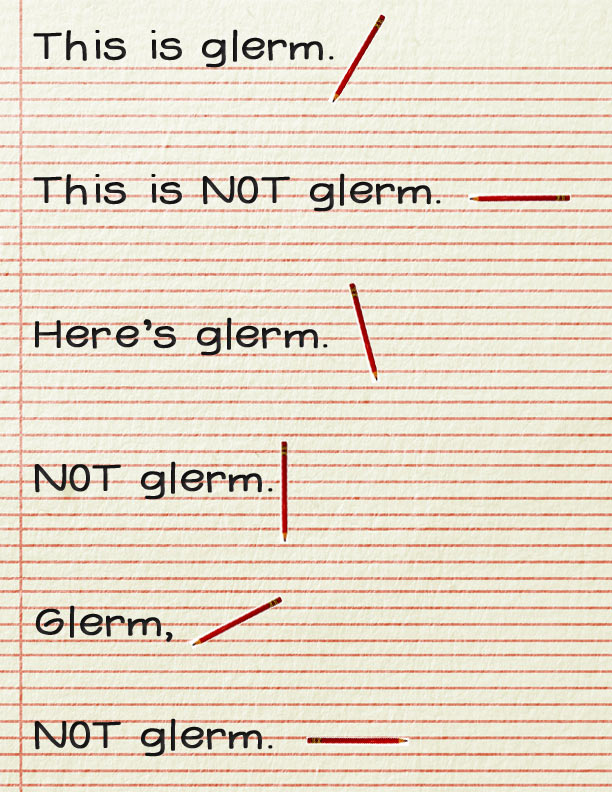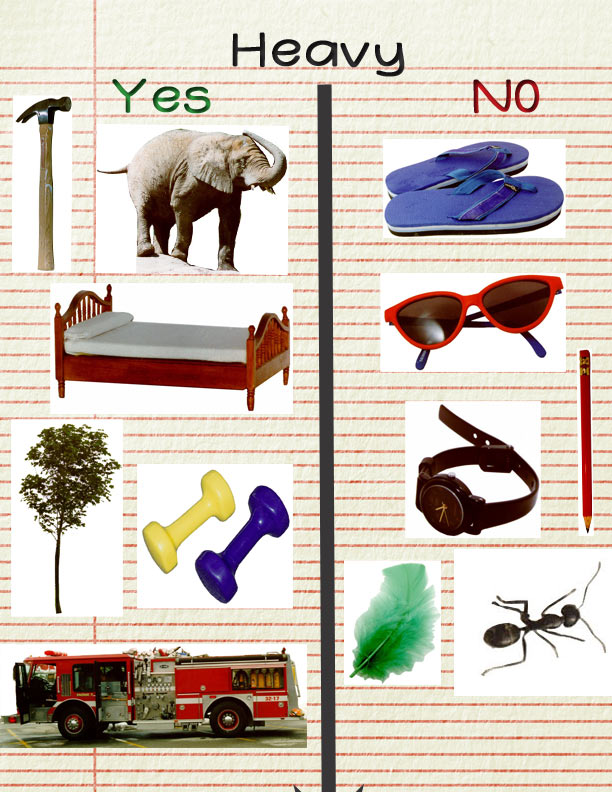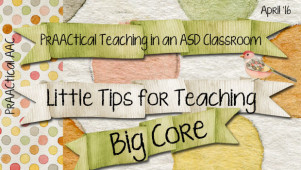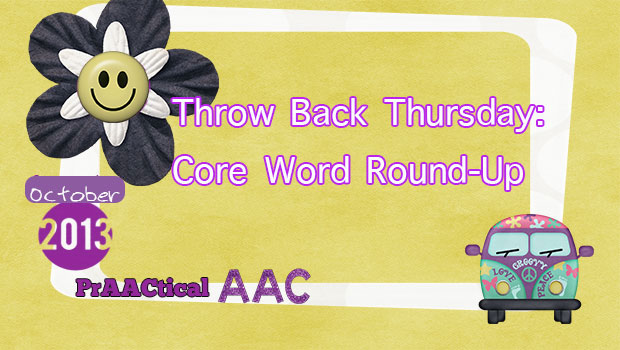The PrAACtical Power of Contrast

It’s a(nother) new semester for us and that means we get the chance to work with a whole new crop of graduate student SLPs who are learning to provide AAC services for the very first time. It just doesn’t get any better than that!
One of the challenges for all beginning clinicians is deciding what intervention strategies to use to facilitate their clients’ learning in various areas. Recently, I had a wonderful conversation about the power of contrastive examples. I was taught this strategy by Dr. Ed Kame’enui and still use his ‘glerm’ activity today to illustrate the concept. The ‘glerm’ activity was quick way to demonstrate how to use carefully chosen examples to teach a new concept. Here’s the activity. You have to use your imagination and pretend this is a demonstration rather than a paper-and-pencil activity, but you’ll get the idea.
And glerm is….? If I did a good job with my contrastive examples, you began to get an inkling that it means diagonal after a few lines. Teaching a new concept in 6 examples? We love the prAACtical nature of this strategy.
Most SLPs use lots of examples in their teaching. But they don’t always maximize the power of those examples because of one thing: They only show, tell about, or demonstrate positive examples of the concept. We use lots of positive examples, and that’s a good thing, because it helps the learner see how the concept applies to many different things. If the target concept is ‘heavy,’ we might try to lift a heavy desk or look at pictures of heavy trucks, elephants, books, boats, buildings, and cars. These are good examples to illustrate the concept.
But an even more powerful strategy would be to contrast those things with things that are NOT heavy.
I like sorting activities for this. Set up bins, baskets, or even paper that can be used to sort positive examples of the concept from negative ones.
Other ways to do this include looking at objects or pictures and:
- Using the client’s SGD to say “concept name” or “not concept name”
- Giving it a thumbs up or down to indicate whether the concept is represented
- Taking a symbol for that concept and using it to label objects or pictures that exemplify the concept
- Using Yes and No symbols to indicate whether the object or picture is or is not representative of the concept
Other activities that we’ve used to help discriminate between positive and negative examples of a concept are listed below.
- Language experience activities to make the concept come alive (e.g., Moving things that are heavy/not heavy)
- Make a collage that represents the concept
- Look through a magazine together to search for examples and non-examples
- Read a story in which the key concept is highlighted
- Do a survey about the concept (e.g., “What do you have in your room that is heavy?”)
By picking examples carefully so that they show both positive AND negative examples of key concepts, we can accelerate the learning process and enhance generalization. Now that’s prAACtical!
Filed under: PrAACtical Thinking
Tagged With: contrast, direct instruction, glerm, teaching
This post was written by Carole Zangari






